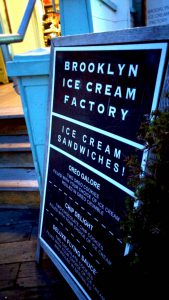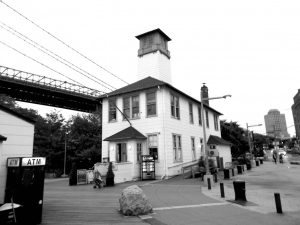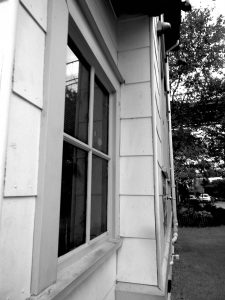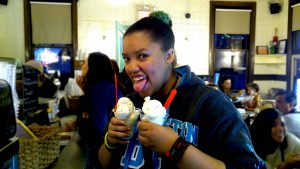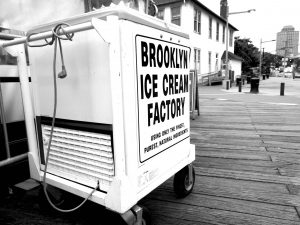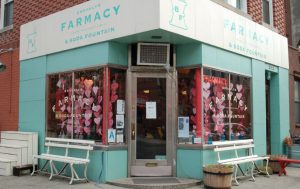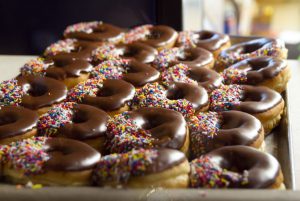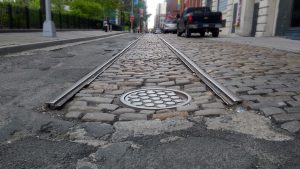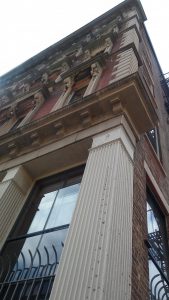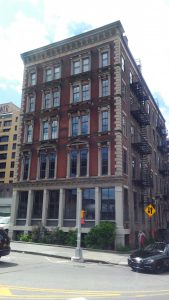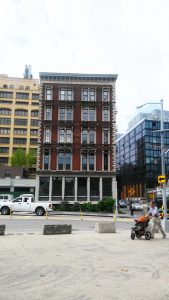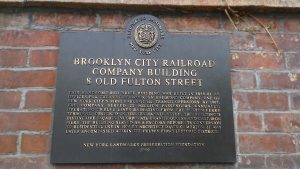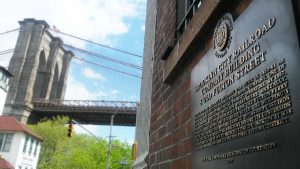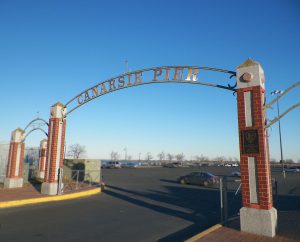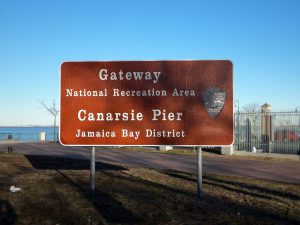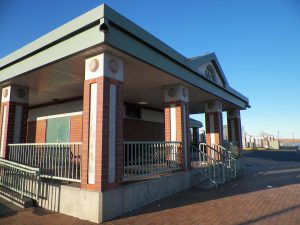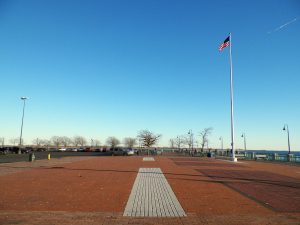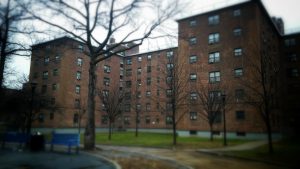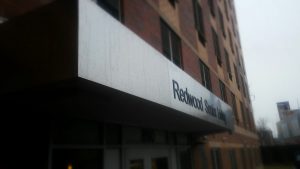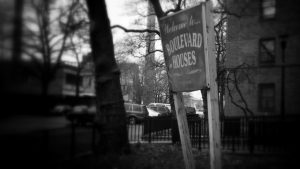As I sit on the three train riding to Brooklyn, I always reminisce on the days when my neighborhood was a familiar place to me. I know you may be thinking “How does a neighborhood that you have lived in for 24 years become unfamiliar to you?” My answer would be that my neighborhood started to change when moving to Brooklyn became the “new, hip and popular” thing to do. Over the past five years, as a result of gentrification, the people who live in my neighborhood have started to disappear into a sea of new and unfamiliar white faces. As the invasive nature of gentrification began to impact people and businesses in my neighborhood, the world that I knew as a child began to change. If you aren’t familiar with the term Gentrification, you should know that the word “gentry” is a homage to white civility and respectability. Gentry can be defined as “people of good social position, specifically (in the UK) the class of people next below the nobility in position and birth.” Stacey Sutton defines the term gentrification in her 2014 Tedx New York Talk “What we don’t understand about gentrification” “ as a process in which higher income or higher status people relocate to or invest in low income urban neighborhoods. These neighborhoods have historically been disinvested by both the public and private sector and as higher income people move to these areas, it’s typically to capitalize on the low property value. In doing so they inflate property values, displace low income people and fundamentally alter the culture and the character of the neighborhood.” I choose this definition because it addresses the real impact of gentrification, and how it can alter the culture of a community rather than the economic standpoints that people mostly focus on.
The real issue with Gentrification is that if it continues at its current pace it shows a strong resemblance to negative housing practices in the past. For example in the early 1900s practices such as Redlining, were adopted in order to place limitations on the housing that people of African descent could attain, and to specifically keep all-white neighborhoods segregated. According to Blackpast.org, redlining, which was “institutionalized by the 1937 U.S. Housing Act ” can be defined as “a discriminatory pattern of disinvestment and obstructive lending practices that act as an impediment to home ownership among African Americans and other people of color. Banks used the concept to deny loans to homeowners and would-be homeowners who lived in these neighborhoods. This in turn resulted in neighborhood economic decline and the withholding of services or their provision, at an exceptionally high cost.” What this means is that people of African descent weren’t permitted, or were prevented, from taking out loans from banks so that they could move into decent neighborhoods, regardless of their income. The practice of Redlining was ultimately used to keep races separate at the expense of people of African descent who could afford to live in prominent neighborhoods. Now, the current process of gentrification is increasing property taxes as well as the prices of rent, and as a result of this, once again people of African descent who cannot afford to pay thousands of dollars for rent every month are being displaced.
My neighborhood has always been filled with people of African descent. However, as the people changed, so did the culture of the neighborhood. Local restaurants and businesses where I used to eat and support regularly began to shut down. My neighborhood was no longer full of kids playing outside until the street lights came on. Block parties stopped happening, the food in the bodegas started to change, but most of all, the brightly colored neighborhood I once live in became pale, and gloomy to me. No one was sitting out on the front steps during the summer, the ice cream trucks seemed to stop coming around, and as gentrification increased, all of the original residents began paying for the change they were unable to prevent.
The familiar friendly faces that I once waved to in the morning as I went to school began to drift away as the new faces forcefully, but smoothly took their place. Building by building, apartment by apartment, person by person, the block that was once filled with owners of African descent whose kids I played with as a child, became foreign to me. As new residents moved in, the older residents who couldn’t sustain living in an area where the rent began steadily increasing had to move. My home of Crown Heights, Brooklyn went from being a safe haven where I could be around people who I had grew up with, to a neighborhood where people only converse with each other solely to request parking spots. Over the years I have watched the neighborhood around me change from having bodegas and Caribbean restaurants with my favorite foods to organic supermarkets, Parisian-themed food trucks, and then a Starbucks appeared. My neighborhood has become so gentrified that on the corner of Franklin Avenue and Eastern Parkway, directly next to the train station, there is now a Citi bike stand. This bike stand has become an inconvenience for tenants who have been living in this neighborhood for years because the bike stand takes up almost half a block of parking spaces. Now for people who do not own vehicles, this isn’t a major issue, but for those whom street parking is necessary, this along with the other changes in the neighborhood have become major inconveniences.
Asides from the practice of Redlining that was implemented to prevent much needed improvements in the housing available to African descent, there was also quite a resistance to integrating neighborhoods that were already well established. This resistance to integrate certain neighborhoods in the early 1900s came from white home owners who stood firmly together in their decision to keep their neighborhoods all-white. I know you may be reading this and saying “What? I don’t believe you, this can’t be true.” On the contrary, According to Mary Sacks’ book Before Harlem: The Black Experience in New York Before World War I, in 1889 “white New Yorkers became more strident in their refusal to live in proximity with black people. They pressured landlords to rent exclusively to white tenants, leaving only the dregs of the housing market available to the black population.” The white residents of Harlem were so enraged about the integration of their neighborhoods, Mary Sacks writes, that in 1913 “angry white residents demonstrated less restraint in their opposition to the black “invasion” of Harlem as they desperately sought to defend their neighborhood from the black “enemy.” She went on to say that “they argued that 130th Street ought to be the dividing line between colored and white people.” This resistance continued to increase, and at times, became violent. People of African descent who were actually able to obtain housing in upscale neighborhoods faced constant harassment from their white neighbors. The book also says, “Police officers’ refusal to protect black people from violence left blacks constantly vulnerable to assault, especially from the ethnic white enclaves living in the vicinity.” People of African descent faced many obstacles when trying to integrate fully white neighborhoods, and they were often brutally assaulted or harassed so much that they retreated back to the steadily declining neighborhoods that they originally worked hard to flee from.
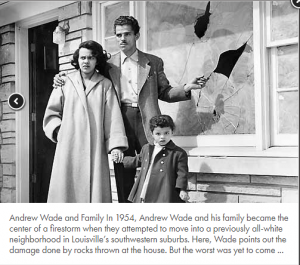
Retrieved from Ket.org
Now can you imagine the difficulties people of African descent faced to find quality, and affordable neighborhoods to live in? Neighborhoods where they could live in without being forced out based on the color of their skin. These neighborhoods where people of African descent found solace in were areas where they built their lives so that they could feel comfortable around other people who for the most part accepted them, and could identify with them. Now that gentrification has begun, the same race of people who fought so hard to keep people of African descent out of their neighborhoods in the past are now moving to the “hood”. Not only are they moving to the “hood”, they are taking over the community and making it their own. It’s amazing to me how in only a few decades, people who wouldn’t dare to live in my neighborhood have started moving in and walk the streets as though their presence in a non-factor. I’ve noticed the tension between the tenants who originally lived in this community and the new white tenants, and as you can imagine one day the question was asked.
An older woman in my neighborhood asked a new white tenant in her building “What are you doing here, living with us?” Her response was “We need cheaper rent, and this neighborhood is affordable.” The conversation ended there, but then I don’t think the question was understood. Personally, I don’t think the older woman was literally asking “did you move here because rent is affordable?”; I interpreted her question to be that she was asking “Why after all this time have you decided to move into our neighborhood after we were never allowed into yours?” I’m only speculating here because of course I don’t know exactly what the older lady meant, but I understood the implications of the question that was posed.
Of course there is a lot of resistance from tenants who lived in this neighborhood before gentrification, because the neighborhood that they knew for years is steadily changing. Yes, on one hand, the produce and food choices are improving and the chain businesses in the area are remodeling their stores to accommodate the new tenants. However, according to the article Gentrification in a Brooklyn Neighborhood Forces Residents to Move On by Vivian Yee, the prices of apartments and the property taxes are increasing, and people who live on a fixed income are getting evicted and displaced from the neighborhood they lived in for decades. Can you imagine how devastating it could be to finally find an area to live in where you don’t face discrimination, racial profiling and constant mistreatment by your neighbors for significant amount of time in your lives, to then be pushed out of your apartment for new tenants?
It’s heartbreaking to see what’s happening to the people living in my neighborhood, and I only hope that some improvements can be made where longtime residents can keep their homes. However, the process has already begun; bike lanes have been implemented onto the side streets and we now have muni meters for hourly parking. These new tenants moving in are populating this area because it’s affordable for them, without considering who’s paying the real cost for them to live here. As the process of mass gentrification seems to be inevitable I do hope that as new people move in, they start to appreciate the culture of the neighborhood their moving into and are respectful of the people who have called the neighborhood home for many years before their arrival. The original tenants are the patriarchs of the community, and it is unethical for newcomers to enter into a community and change it so that conforms to their specific taste.
Now that I have described my personal experience with Gentrification in my neighborhood, tell me your story. What are your thoughts on gentrification? How are you or your family or your friends directly affected? Leave me a comment and let me know how you a currently feeling about this topic.

